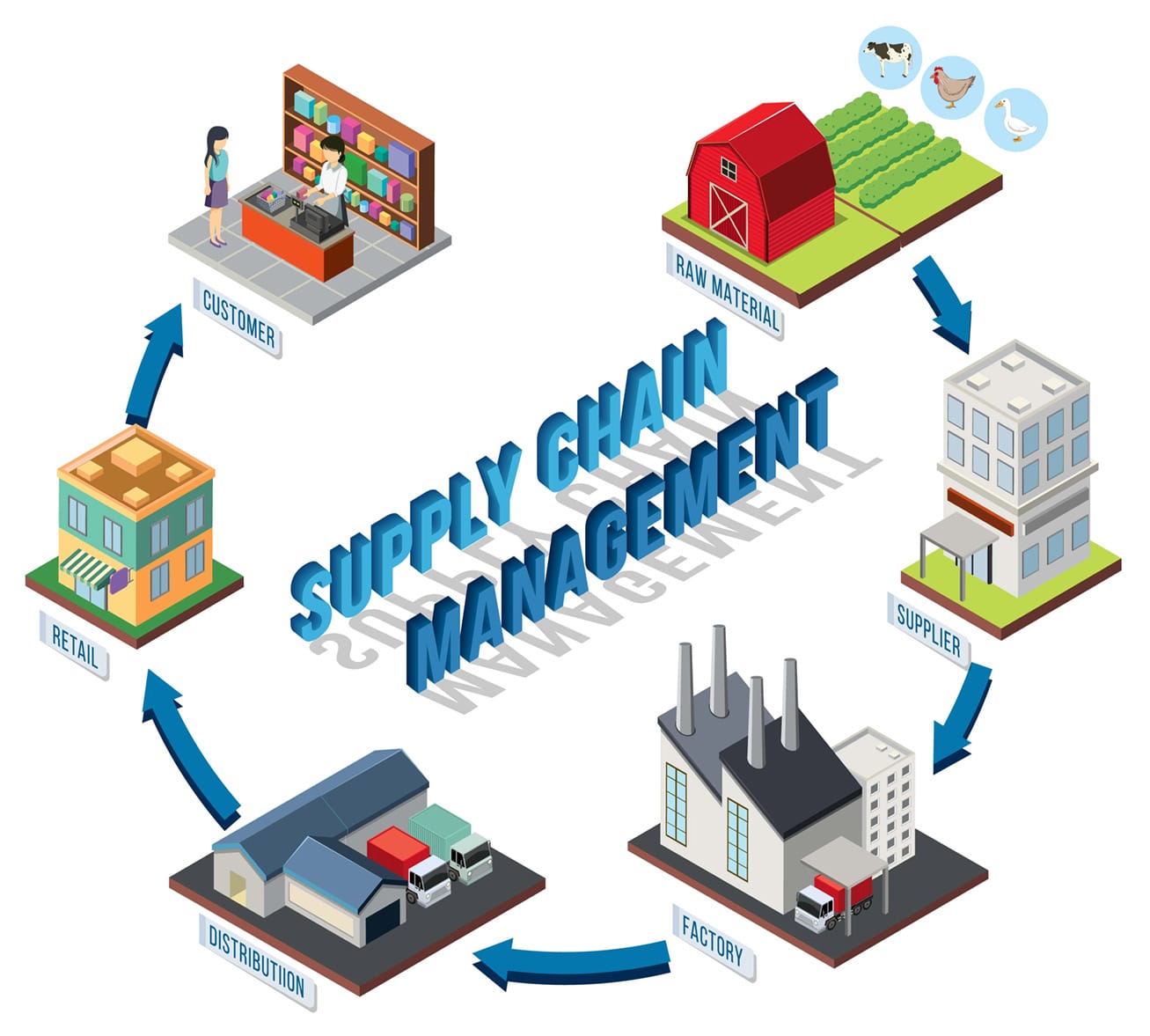The Importance of Supply Chain Mapping
Research reveals that 75% of companies experience at least one major supply chain disruption within two years, yet most freight forwarders lack systematic approaches to identify vulnerabilities before disasters strike.
Effective supply chain risk management transforms reactive crisis responses into proactive protection strategies that safeguard operations, maintain customer confidence, and preserve profitability during turbulent market conditions.
The complexity of modern freight forwarding operations creates extensive vulnerability networks where single supplier failures cascade through interconnected systems, disrupting deliveries across multiple clients simultaneously. Understanding these dependencies through comprehensive supply chain mapping enables businesses to identify critical weak points whilst developing targeted protection measures that prevent minor issues escalating into catastrophic operational failures.
Small and medium freight forwarders often believe supply chain risk management requires expensive enterprise software or dedicated analytical teams beyond their budgetary constraints. However, practical risk identification and mitigation relies primarily on systematic processes using accessible tools that deliver substantial protective benefits without significant financial investment.
Understanding Supply Chain Mapping Fundamentals
Supply chain mapping creates visual representations of your complete logistics network, revealing every connection, dependency, and potential vulnerability from raw material origins through final delivery.
This foundational process transforms abstract business relationships into tangible diagrams that highlight geographic concentrations, transportation dependencies, and single point failures requiring attention before disruptions occur.
Effective supply chain mapping begins by identifying all Tier 1 suppliers providing direct services or materials, then extending analysis to Tier 2 and 3 suppliers supporting your primary partners. Many freight forwarders discover surprising dependencies when mapping reveals that multiple supposedly independent suppliers rely on identical sub tier partners, creating hidden concentration risks invisible without systematic analysis.
The visualisation process uses simple tools like flowcharts, network diagrams, or geographic maps showing supplier locations, transportation routes, and inventory storage points. Microsoft Office applications, Google Maps, and basic spreadsheet software provide adequate functionality for initial supply chain mapping exercises without requiring specialised procurement software investments.
Geographic clustering becomes immediately apparent through visual supply chain mapping, revealing when multiple critical suppliers operate within single regions vulnerable to localised disruptions like port congestion, natural disasters, or political instability. This awareness enables strategic diversification decisions that distribute risk across multiple geographic locations.

Step by Step Supply Chain Mapping Implementation
Begin your supply chain risk management programme by selecting one critical product or service line for detailed mapping rather than attempting comprehensive analysis across all operations simultaneously. This focused approach delivers actionable insights quickly whilst developing expertise applicable to subsequent mapping exercises covering additional product categories.
Gather comprehensive data about each supplier including precise locations, lead times, transportation modes, backup capabilities, and financial stability indicators. Interview operational staff who maintain daily supplier relationships, as they frequently possess valuable insights about reliability concerns and operational challenges that formal documentation misses entirely.
Create your initial map using whatever tools feel comfortable, whether hand drawn diagrams later digitised or spreadsheet based network representations. The mapping format matters less than capturing complete information about supplier relationships, dependencies, and potential vulnerabilities requiring further investigation through your risk assessment process.
Document transportation routes between each supply chain node, identifying specific ports, carriers, and transit pathways your goods follow. This detail reveals transportation concentration risks where multiple shipments depend on identical infrastructure vulnerable to disruption through strikes, congestion, or capacity constraints affecting delivery reliability.
Comprehensive Risk Assessment and Prioritisation
 Systematic risk assessment evaluates each identified vulnerability against two critical dimensions: likelihood of occurrence and potential business impact if disruption materialises. This analysis framework enables rational prioritisation focusing protective resources on highest priority threats rather than attempting to address every possible risk simultaneously.
Systematic risk assessment evaluates each identified vulnerability against two critical dimensions: likelihood of occurrence and potential business impact if disruption materialises. This analysis framework enables rational prioritisation focusing protective resources on highest priority threats rather than attempting to address every possible risk simultaneously.
Create a simple risk matrix categorising threats as high, medium, or low based on both probability and consequence severity. High likelihood, high impact risks demand immediate attention through comprehensive risk mitigation strategies, whilst low probability, low impact scenarios receive monitoring without immediate resource investment.
Financial exposure calculations help quantify potential disruption costs, incorporating revenue losses from delivery delays, penalty clauses in customer contracts, emergency procurement expenses, and reputational damage from service failures. These monetary estimates facilitate executive decision making about appropriate investment levels for protective measures.
Supplier performance indices tracking on time delivery rates, quality metrics, and responsiveness to issues provide objective data supporting risk assessments beyond subjective opinions. Historical disruption patterns frequently predict future vulnerabilities, as suppliers demonstrating consistent reliability problems will likely continue causing operational challenges.
Proactive Risk Mitigation Strategies In Freigh
Supplier diversification represents the most fundamental risk mitigation strategy, ensuring that critical materials or services remain available through alternative sources if primary suppliers experience disruptions.
Maintaining relationships with backup suppliers requires ongoing investment through occasional orders that validate capabilities whilst preserving access during emergencies.
Strategic inventory buffers for critical items provide operational continuity during supplier disruptions, though holding costs must balance against disruption risks. Calculate optimal buffer levels considering lead times, consumption rates, and historical supply interruptions to avoid excessive capital tied up in unnecessary stock.
Develop comprehensive contingency plans specifying exact actions when specific disruptions occur, including alternative supplier contacts, emergency transportation arrangements, and customer communication protocols. Regular testing through tabletop exercises identifies plan weaknesses before real crises demand flawless execution.
Contract negotiations should incorporate risk mitigation clauses addressing supplier responsibilities during disruptions, backup capacity requirements, and penalty structures incentivising reliability. Some freight forwarders establish strategic partnerships with key suppliers involving shared risk assessment and collaborative continuity planning.
Affordable Supply Chain Monitoring Solutions
 Free resources provide substantial supply chain risk management capabilities for budget conscious freight forwarders. The National Institute of Standards and Technology Manufacturing Extension Partnership offers comprehensive frameworks specifically designed for small manufacturers and logistics companies requiring systematic risk assessment without enterprise software investments.
Free resources provide substantial supply chain risk management capabilities for budget conscious freight forwarders. The National Institute of Standards and Technology Manufacturing Extension Partnership offers comprehensive frameworks specifically designed for small manufacturers and logistics companies requiring systematic risk assessment without enterprise software investments.
Google Maps enables geographic vulnerability analysis revealing supplier concentrations and transportation dependencies affecting operational resilience. Create custom maps showing all supplier locations, warehouse facilities, and major transportation hubs to visualise geographic risk exposure requiring diversification efforts.
Microsoft Excel provides adequate functionality for risk matrices, supplier performance tracking, and scenario analysis without specialised software purchases. Free templates available online accelerate implementation whilst demonstrating concepts before considering more sophisticated solutions.
News monitoring services and industry publications provide early warning signals about emerging risks affecting supply chains, including port congestion reports, carrier capacity constraints, regulatory changes, and geopolitical developments impacting international freight movements. Systematic monitoring enables proactive responses before disruptions impact operations.
Advanced Monitoring and Early Warning Systems
Whilst basic supply chain risk management relies on free tools, growing freight forwarders eventually require more sophisticated monitoring capabilities tracking real time disruptions across global networks. Cloud based platforms offer entry level subscriptions providing weather alerts, port congestion updates, and carrier performance data supporting proactive decision making.
Automated alert systems notify designated staff when monitored risks exceed predetermined thresholds, enabling rapid responses minimising disruption impacts. Configure alerts for specific geographic regions, transportation corridors, or supplier performance metrics most critical to your operational requirements.
Industry collaboration through freight forwarder associations provides shared intelligence about emerging threats and effective risk mitigation strategies. BIFA members access resources addressing common challenges whilst learning from peers’ experiences managing supply chain disruptions.
At SARR Logistics UK, our advanced tracking systems and strategic warehousing facilities near major UK ports provide operational visibility supporting effective supply chain risk management. Our positioning near Felixstowe, Tilbury, Southampton, Liverpool and London Gateway enables rapid responses when disruptions affect primary transportation corridors.
Integrating Risk Management into Daily Operations
 Sustainable supply chain risk management requires cultural integration ensuring that risk awareness influences daily operational decisions rather than remaining isolated planning exercises. Regular risk reviews during operational meetings maintain focus on emerging threats whilst celebrating successful risk mitigation outcomes reinforces protective behaviours.
Sustainable supply chain risk management requires cultural integration ensuring that risk awareness influences daily operational decisions rather than remaining isolated planning exercises. Regular risk reviews during operational meetings maintain focus on emerging threats whilst celebrating successful risk mitigation outcomes reinforces protective behaviours.
Performance metrics should incorporate risk management indicators alongside traditional efficiency measures, tracking supplier diversification progress, contingency plan testing completion, and early warning system effectiveness. What gets measured receives management attention, ensuring risk protection remains operational priorities.
Staff training develops risk awareness across operational teams, empowering employees to identify emerging vulnerabilities and escalate concerns appropriately. Frontline staff often detect early warning signals through daily supplier interactions that formal monitoring systems miss entirely.
Our comprehensive approach to supply chain mapping provides detailed analysis identifying vulnerabilities across complex logistics networks. Combined with our customs clearance expertise, we help businesses navigate regulatory risks whilst maintaining compliance across diverse international markets.
Building Resilient Multi Modal Transportation Networks
Diversified transportation capabilities provide essential flexibility during disruptions affecting specific modes or routes. Freight forwarders offering sea freight, air freight, road freight, and rail freight solutions can rapidly pivot between modes when primary options experience capacity constraints or service disruptions.
The COVID-19 pandemic demonstrated how single mode dependency creates catastrophic vulnerabilities when global disruptions simultaneously affect all operators within specific transportation categories. Companies maintaining relationships across multiple modes weathered disruptions more successfully than businesses locked into single transportation strategies.
Strategic carrier relationships built through consistent volume commitments provide preferential treatment during capacity shortages when carriers prioritise loyal customers over occasional users. These relationships become particularly valuable during peak seasons or crisis periods when available capacity becomes severely constrained.
Our project cargo expertise demonstrates how complex supply chain risk management supports specialised shipments requiring meticulous coordination across multiple parties and transportation modes. We understand that risk mitigation strategies must adapt to unique cargo characteristics and customer requirements.
Long Term Strategic Planning and Improvement
Supply chain risk management evolves continuously as business operations expand, supplier relationships change, and external threats develop. Annual comprehensive reviews update risk assessments whilst identifying new vulnerabilities emerging from operational changes or market developments requiring protective responses.
Scenario planning exercises explore potential future disruptions including unlikely but high impact events that warrant contingency consideration despite low probability. These exercises develop organisational resilience whilst identifying capability gaps requiring investment before crises demand immediate responses.
Technology investments should align with growing risk management sophistication as businesses expand and supply chain complexity increases. Start with free tools demonstrating value, then progressively adopt more sophisticated solutions as operational scale justifies additional investment.
![]() Contact our experienced team at [email protected] or call 0333 224 1 224 to discuss how our comprehensive logistics services support your supply chain risk management requirements. We understand that effective protection requires both strategic planning and operational excellence across all freight forwarding disciplines.
Contact our experienced team at [email protected] or call 0333 224 1 224 to discuss how our comprehensive logistics services support your supply chain risk management requirements. We understand that effective protection requires both strategic planning and operational excellence across all freight forwarding disciplines.
Conclusion
Effective supply chain risk management transforms freight forwarding operations from reactive crisis responses into proactive protection strategies that safeguard business continuity during inevitable disruptions. Systematic supply chain mapping reveals vulnerabilities invisible without structured analysis, whilst comprehensive risk mitigation strategies address identified threats before they cause operational catastrophes.
The practical approaches and affordable tools discussed enable freight forwarders of all sizes to implement meaningful protection without excessive financial investment. Success requires commitment to systematic processes rather than expensive software, with most benefits arising from disciplined analysis using basic tools applied consistently.
As supply chain complexity increases and global disruptions become more frequent, businesses investing in comprehensive risk management capabilities will maintain competitive advantages over reactive competitors struggling to recover from preventable crises. The question facing every freight forwarder remains whether to invest in protection before disruptions occur or accept vulnerability costs when inevitable crises materialise.
FAQ
 What is supply chain mapping and why does it matter for freight forwarders?
What is supply chain mapping and why does it matter for freight forwarders?
Supply chain mapping creates visual representations of your complete logistics network showing every supplier, transportation route, and dependency affecting operations. It matters because hidden vulnerabilities become visible through mapping, revealing concentration risks, single points of failure, and geographic exposures requiring protection. Most freight forwarders discover surprising dependencies when systematic mapping reveals that supposedly independent suppliers rely on identical sub tier partners.
How much does effective supply chain risk management cost for SME freight forwarders?
Basic supply chain risk management costs almost nothing using free tools like Google Maps, Excel, and NIST frameworks. Initial mapping exercises require time investment rather than financial expenditure, typically 20-40 hours for comprehensive analysis of critical product lines. Advanced monitoring systems cost £50-200 monthly for entry level subscriptions, though many businesses operate effectively using free resources for years before requiring sophisticated platforms.
What are the most common supply chain risks facing UK freight forwarders?
Port congestion at major UK facilities affects delivery reliability across multiple customers simultaneously.
Carrier capacity constraints during peak seasons create service disruptions and cost increases. Single supplier dependencies mean that one partner’s failure cascades through operations affecting numerous clients. Brexit related customs delays continue creating unpredictable clearance timelines. Cyber attacks targeting logistics systems disrupt operations increasingly frequently.
How often should freight forwarders update their risk assessments?
Conduct comprehensive annual reviews updating complete risk assessments and supply chain mapping. Quarterly reviews monitor high priority risks and emerging threats requiring immediate attention. Monthly operational meetings should include brief risk discussions addressing near term concerns. Trigger immediate assessments when major events occur including supplier changes, new customer relationships, or external disruptions affecting your industry.
What practical steps can freight forwarders take immediately to improve supply chain resilience?
Start by mapping one critical product line identifying all suppliers and dependencies. Contact alternative suppliers for critical services establishing backup relationships before emergencies. Document exact contingency procedures for your three highest impact risks. Review customer contracts identifying penalty exposures from delivery failures. Implement simple Excel based tracking for supplier performance metrics. Subscribe to free industry newsletters providing early warnings about emerging disruptions.



 What is supply chain mapping and why does it matter for freight forwarders?
What is supply chain mapping and why does it matter for freight forwarders?




